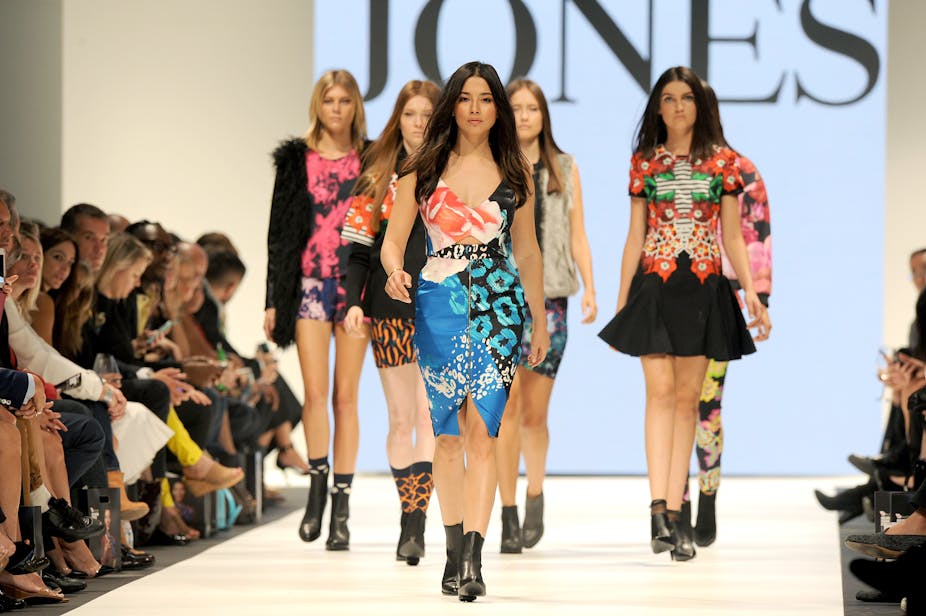If you wear clothes – and most of us do – there will be an event, exhibition or activity at this week’s Virgin Australia Melbourne Fashion Festival (VAMFF) – which started on Monday – that will intrigue and inspire you. Even those who take an anti-fashion stance might find themselves enthused by the diverse offering under the broad heading of “fashion” in the extensive cultural program which fuses fashion with the arts, film, dance and food.
So how did it get to where it is now, since its beginnings 18 years ago?
In 1996 I was fortunate to be invited to join a group of individuals to discuss the status of the Australian fashion industry, which at the time was struggling within a recessed economy. In this environment a culture of culpability had arisen - designers blamed buyers for not buying their collections, buyers blamed manufacturers for their poor quality or high prices, retailers blamed consumers for not being interested.

An idea sprang forth to develop a festival that acknowledged the greatness inherent in the local fashion industry – to celebrate the goodness and create positive role models. The ethos of the Festival from day one was to excite the person on the street and provide the inspiration to engage and this spirit has been a driving force in establishing the Melbourne Fashion Festival as a successful event model.
The festival is funded both by the state government and a range of partners from the private sector. Each year the fashion spotlight shines on Melbourne and we continue to see upward trends related to economic impact, promotional exposure, cultural positioning and associated retail expenditure, as evidenced by the City of Melbourne’s 2012 retail strategy report card:
more than 380,000 fashion devotees attended the Festival’s 126 officially programmed events and aligned activities … and the Festival’s Cultural Program delivered over 79 fashion themed events.
Whereas other major fashion weeks concentrate activities on a distinctive tier of the industry’s most notably premium design brands, the Melbourne event seeks to celebrate and showcase the depth and breadth of all things “fashion”.

At the “big four” events – Paris, Milan, London and New York fashion weeks – designer brands are showcased to a select audience of between 100 to 300 attendees, who predominatly are retail buyers and fashion media, with a sprinkling of celebrities carefully placed in the front row to generate media interest.
By contrast, the Melbourne Fashion Festival is about the democratisation of fashion, providing a platform for all tiers of the industry, from micro operators such as those early career designers whose collections were highlighted on Tuesday at the Tiffany & Co. National Designer Award, through to the large chain stores such as David Jones who showcased their in-store collections as part of the Opening Event on Monday night.
The Fashion Festival seeks to support emerging designers - the National Designer Award has helped launch the careers of designers such as Toni Maticevski, Dion Lee, Josh Goot and Romance Was Born.
There’s also the National Graduate Showcase which champions fashion design graduates. As well as giving them the opportunity to share the runways with leading designers it also offers mentoring opportunities.

The Festival’s greatest strength lies in the consumer to business relationships it has enhanced. The energy and visual experience is not confined to the media spectacle of fashion personalities and celebrities. Instead the public is provided with access to runway shows which lets them engage with fashion brands on a different level. Many Festival events such as those in the cultural program are free; while others such as the runway shows can be accessed through ticket sales.
Like other fashion events, the Festival showcases designer collections – but its catwalks are enormous lengthened runways with audience capacities sometimes in the thousands, worlds apart from the discreet showcases in the top four fashion capitals.
Through a digital interface developed in the past two years, the audience can also “see now, buy now”, an innovative concept that directly links Australian designers with the consumer.
Behind the scenes and beyond the month of March, the Festival works collaboratively with the Victorian State Government on trade missions, export strategies and global connections in promoting the local fashion industry to the world, subsequently promoting continuing growth of this sector.

Like many fashion sectors around the globe, the local industry has drastically repositioned itself over the past three decades - moving from geographically-connected clusters within centralised inner city manufacturing bases to disconnected, wide-spread companies housed in anonymous spaces across the country.
Due to these shifts, which have seen the demise in local manufacturing, businesses now work in a framework of a global supply chain connected through digital interfaces.
This is a phenomenon that has impacted the fashion industry worldwide. Recognising this major shift the Fashion Festival has developed forums and seminars such as such as the Business Seminar, Fashion Industry Forums and Marketing Breakfast designed to bring the dispersed industry together. These forums provide industry intelligence, enable networking and support business growth.
This event is a great opportunity to celebrate Australian fashion creativity and acknowledge the broad impact it has. I have already started a wish list of must-have fashion items that I’ll be adding to my wardrobe!
The Melbourne Fashion Festival is on now. Details here.
Are you an academic or researcher working in fashion or textiles? Contact the Arts + Culture editor.

